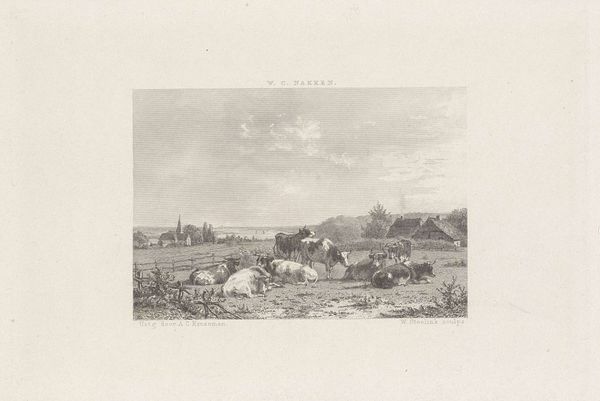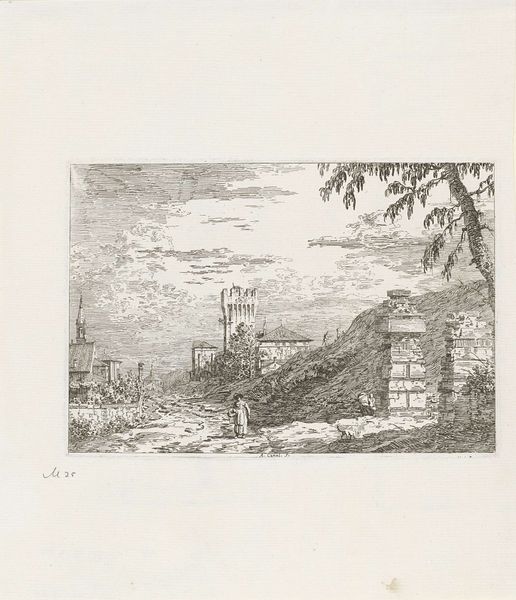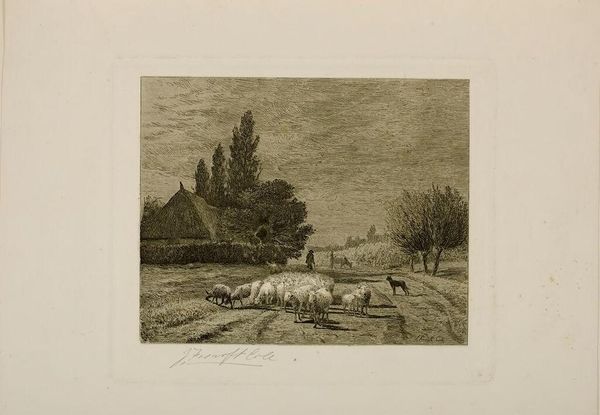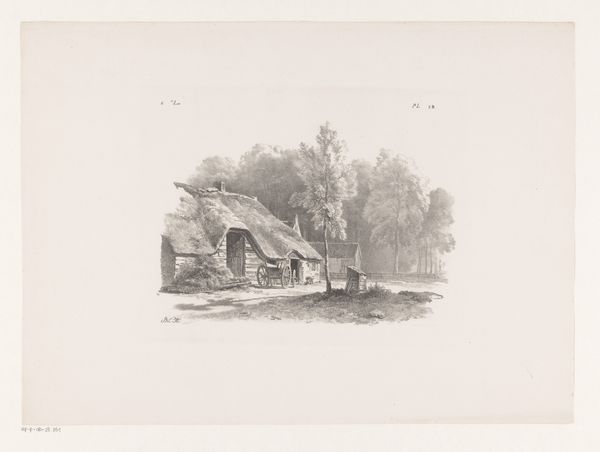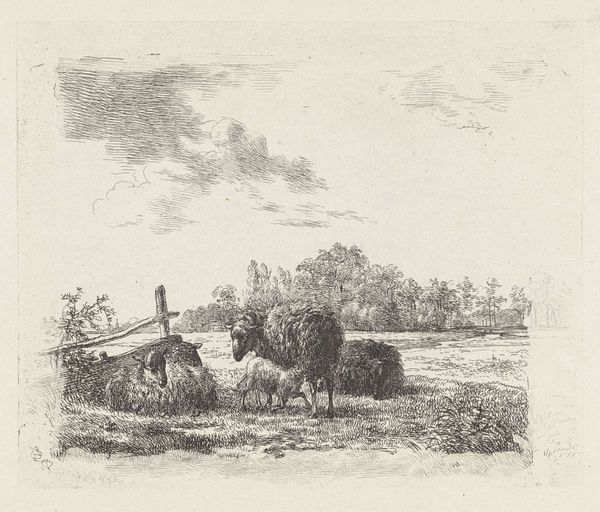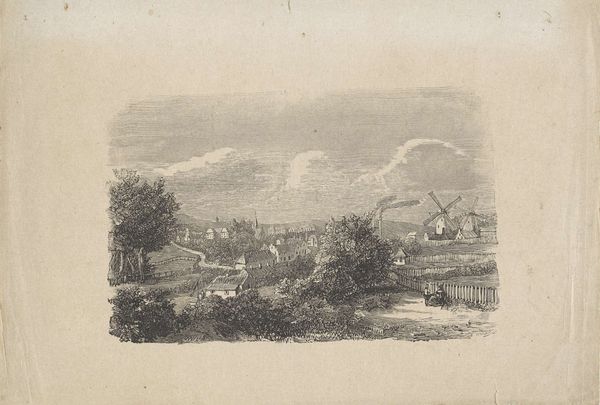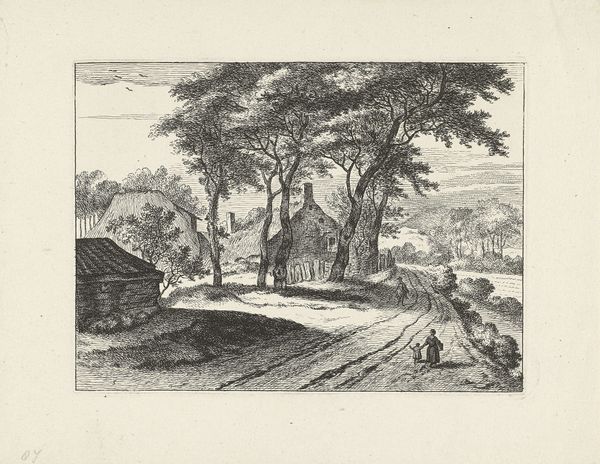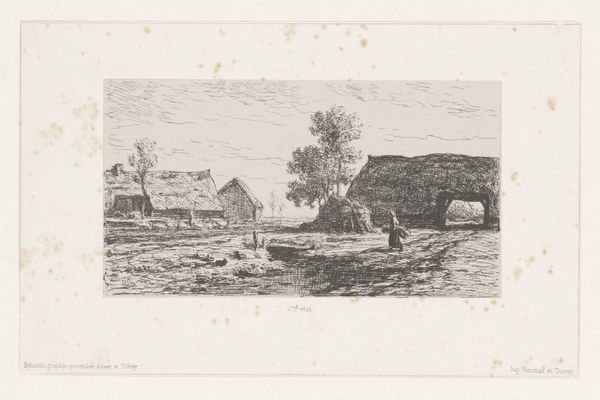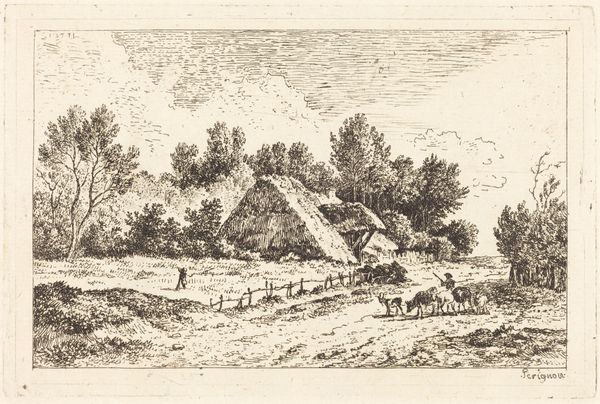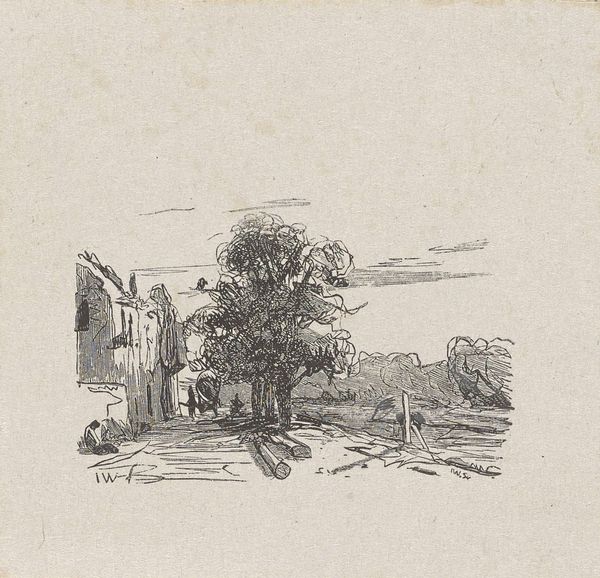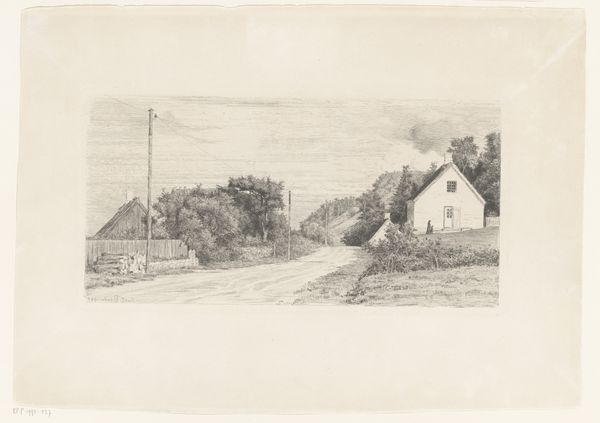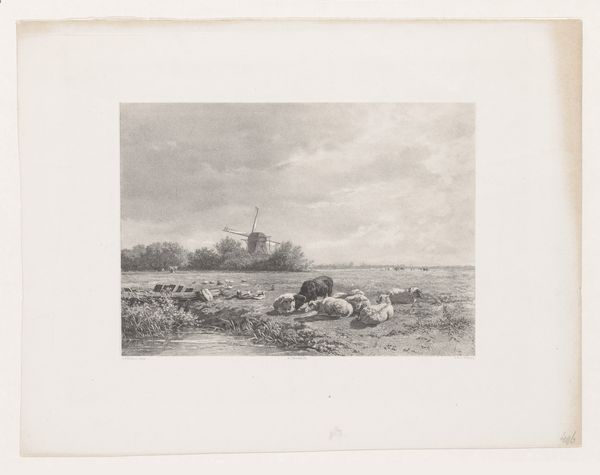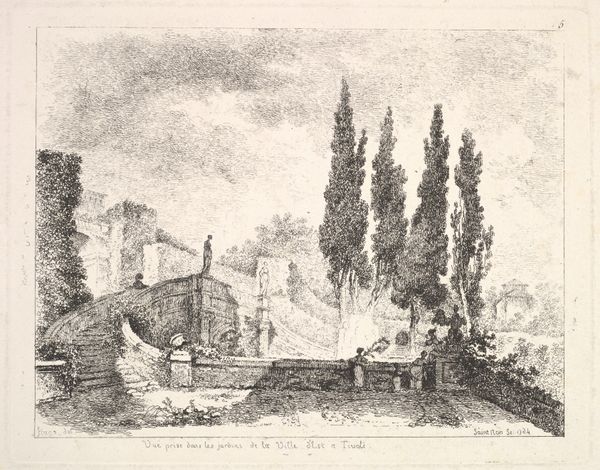
drawing, pencil
#
pencil drawn
#
drawing
#
landscape
#
pencil
#
genre-painting
#
realism
Dimensions: height 99 mm, width 168 mm
Copyright: Rijks Museum: Open Domain
Curator: Let’s turn our attention to Charles Rochussen’s "Cows by a Road," created around 1855. This captivating landscape drawing is part of the Rijksmuseum’s collection. Editor: Immediately, the composition strikes me. The tonal gradations achieved with pencil, creating depth. It’s as if he’s meticulously charted every shadow. Curator: Indeed. Consider the implications of Rochussen choosing a pencil. He was making artistic decisions connected to prevailing social concerns by elevating it beyond utilitarian sketching to a display-worthy art form. The industrial revolution changed pencil manufacture, making pencils more consistent. How does this intersect with themes present in the picture? Editor: Very insightful. Shifting back to formal qualities, look how Rochussen manipulates line and shading. This meticulous detailing shapes not just cows but a complete world. He uses the intrinsic potential of pencil lines, isn't he? Curator: Precisely, by depicting commonplace imagery, Rochussen elevates labor and the value of raw materials by portraying cows realistically without romanticism and portraying windmills with precision which places emphasis on productivity, mirroring his method, where even mundane themes undergo transformation. Editor: You've made me view the picture in a new way. But, in abstraction, do these details evoke something else, something less easily tied to the work? How the windmills punctuate a hazy, linear horizon, creating subtle rhythm, the soft shadows cast are captivating too. Curator: And what about Rochussen’s involvement within artist collectives to support his commercial work through commissions? Does he not share those experiences through depicting these everyday rural elements within his art, capturing the material reality of nineteenth-century Netherlands? Editor: Very persuasive. My aesthetic viewpoint sees the atmospheric qualities emerging as much from light modulation as social implications. Rochussen's skillful deployment of line, shape, and tonal harmony achieves something resonant. Curator: By appreciating his artwork from this perspective, Rochussen enables us to reassess what constitutes art, urging us to think critically about labor's material conditions during times of transformation, a subject profoundly articulated using a ‘simple’ pencil. Editor: This nuanced reading illuminates so much here—thanks. I depart feeling an aesthetic response to what is before my eyes has expanded far beyond my initial gaze.
Comments
No comments
Be the first to comment and join the conversation on the ultimate creative platform.
